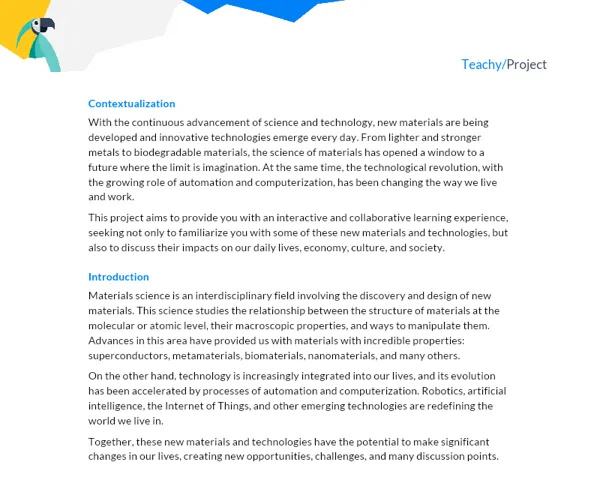Context
Theoretical Introduction
Water is a fundamental resource for life on Earth. So much so, that its existence on other planets is one of the main indicators that scientists look for when trying to find life beyond Earth. We use it in our daily activities, such as drinking, cooking, and bathing, but also in industrial and agricultural activities, for example, for food and energy production.
Water is a finite resource, meaning there is a limited amount of water available for use on Earth. Despite seeming abundant, the amount of fresh water - which is what we can use - is very small compared to the total amount of water on the planet.
In addition, water is crucial for maintaining healthy ecosystems. Animals and plants need water to survive, and many depend on aquatic environments, such as rivers and lakes. Pollution and overexploitation of these ecosystems can lead to species extinction and loss of biodiversity.
Contextualization
The lack of access to clean water affects millions of people around the world and is one of the great challenges of the 21st century. Knowing how to use water consciously and sustainably is essential to ensure that everyone has access to this essential resource.
In addition to sustainability and equity issues, proper water management can also bring economic benefits. For example, reusing water in agriculture can reduce production costs and improve the efficiency of irrigation systems.
To learn more about the topic, we suggest the following resources:
- Book "The Water We Need" by Eduardo Salavisa and Isabel Zambujal. This book, intended for children, talks about the importance of water and how we can use it more consciously.
- Video "Water in the World", available on YouTube. The video presents information on the distribution of water on the planet and the importance of its conscious use.
- Website of the National Water and Sanitation Agency (ANA). The website has a number of educational information and resources on water and its management in Brazil.
Practical Activity
Activity Title: Building a Water Reuse System
Project Objective
The objective of this project is to design and build a simple water reuse system for use in a small garden or vegetable garden. The idea is that students can see firsthand how it is possible to reuse water that would normally be wasted, thus saving resources and increasing sustainability. In addition, the project will aim to integrate science, mathematics and manual skills.
Detailed Project Description
The students, divided into groups of 3 to 5, will have to imagine and create a water reuse system that can be used in a garden or vegetable garden. This system should be able to collect water from places such as rain, a sink, or even water that is washed from vegetables in the kitchen. The filtration process of the collected water is also part of the project.
The project will be divided into several stages, each requiring research, planning, construction and testing. Students will need to document each step of the process and produce a report at the end, presenting the final system, discussing their findings and reflecting on the project.
Required Materials
- Water collection containers (eg buckets, empty water bottles)
- Filtration materials (eg sand, stones, sponges, cotton)
- Materials for building the reuse system (eg PVC pipes, glue, adhesive tape)
- Construction tools (eg scissors, utility knife, drill)
- Pens, paper and a camera to document the process
Detailed Step-by-Step
-
Research: Students will research water collection and reuse to understand the theoretical concepts and existing systems. They will need to write down the important information and use it as a basis for the project.
-
Planning: Based on the research, students will create a detailed plan for the water reuse system. This plan should include a drawing of the system, a list of materials needed and a construction step-by-step.
-
Construction: Following the plan, students will build the water reuse system.
-
Test: Once built, the system will be tested. Students will collect the water and see if the system works as planned.
-
Documentation: Throughout the process, students should document what they did, what problems they faced and how they solved them. They should take pictures or draw the system at various stages of construction and use.
-
Report: Finally, the students will write a detailed report on the project. The report should follow the structure described above and be done jointly by the group.
Project deliverables: The group will deliver the built water reuse system, documentation of the construction process, and the final report.
Students should write the written document (report) in a scientific report format, containing introduction, development (with detailed description of the entire process of research, planning, construction and testing of the system), conclusions (learnings, problems encountered and how they were solved, project relevance, etc.) and the references used, ensuring that the entire process is properly documented and explained.

